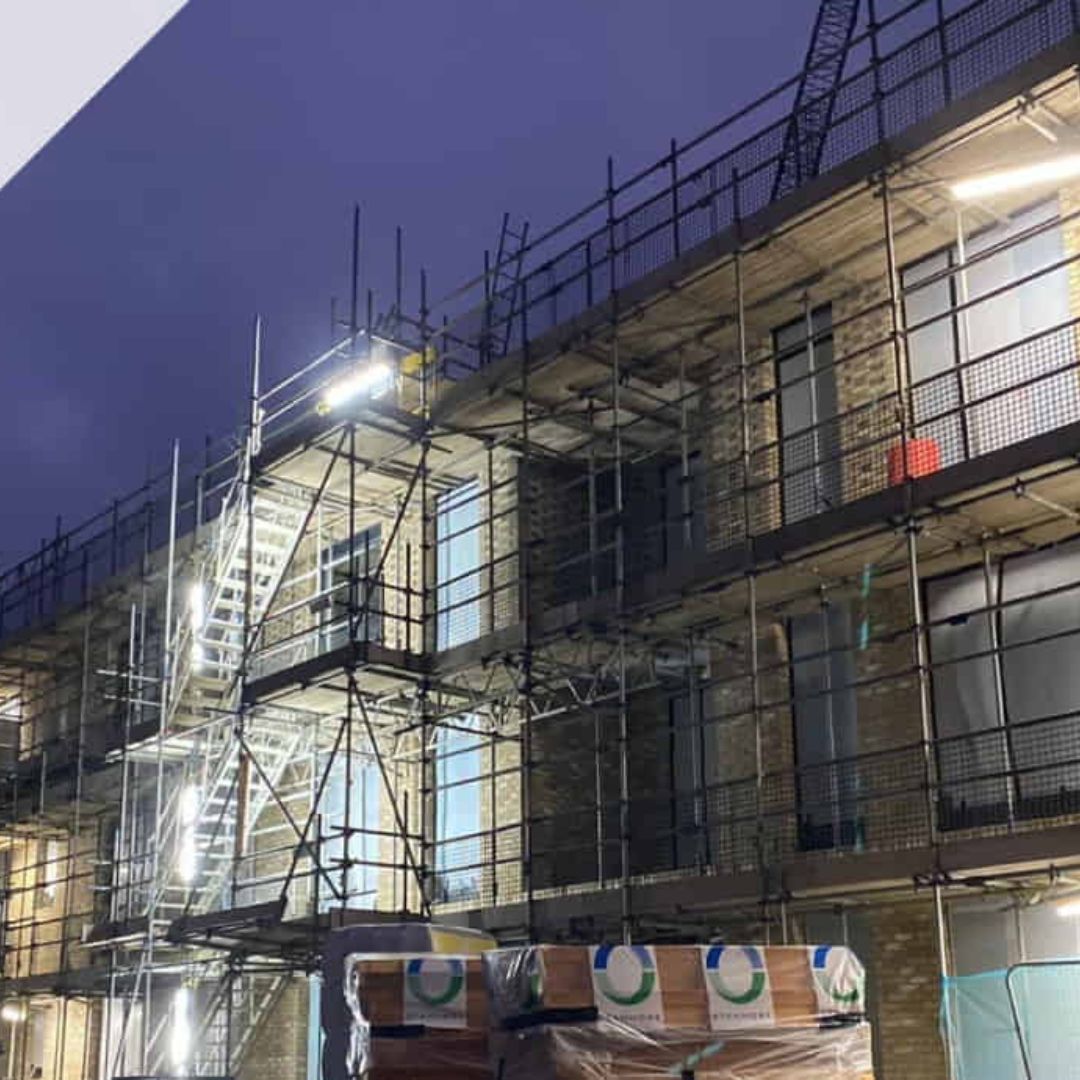Whether it is for worker safety, regulatory compliance, or to keep your assets onsite secure, proper lighting is crucial on any construction site. Work on many construction sites goes on till late at night or even early mornings. With temp lighting for construction sites, you can be sure that you are not compromising on the safety and security of personnel and equipment at the site. Unlike permanent lighting, temporary lighting is designed in a way that it can adapt to the changing nature and requirements of a construction environment.
Why Temporary Construction Site Lighting Matters?
Construction sites usually feature heavy machinery and equipment, valuable materials, elevated areas, and obstacles that can restrict workers’ movement. Adequate lighting is a must in such places. With the right kind of temp lighting for construction, the risk of falls, Slips, trips, and accidents reduces significantly. Besides, with poor visibility, the risks of making costly errors also increase.
That is why temporary lighting for construction sites is not something that you can leave to chance. Just like it is important to use the right kind of lights in offices and workspaces for safety and better productivity, it is equally important to keep your construction sites well-lit to keep your project on track.
Best Practices for Using Temp Lighting on Construction Sites
- Understand the Lighting Needs Before Setup
To start with, conduct a site audit. This will help determine and identify spots where lighting is most needed.
The high-traffic zones like walkways, stairwells, and loading areas should be lighted first. Also, places where hazardous tasks are performed should be well illuminated.
- Choose the Right Type of Lighting
The choice depends on the exact sites. For example, temporary construction site lighting like LED floodlights should be used to cover wider areas, work lights for focused tasks, string lights for pathways and corridors, and tower lights for 360-degree illumination.
- Follow Electrical Safety Standards
Temp lighting for construction needs to mandatorily follow the local electrical codes. The wiring should be weather-resistant. Make sure the wires are properly insulated. Also, there should be no loose wires hanging to prevent tripping hazards or short circuits.
- Ensure Flexibility and Mobility
Temporary construction site lighting should be flexible enough to adapt to the evolving needs of the construction site. The best choice is portable and easy-to-relocate lighting fixtures for use and reuse within the same construction site and also at other sites.
- Regular Inspections and Maintenance
This is a must to ensure quick identification of signs of wear and tear, faulty fixtures, damaged cords and wires, etc. All the units that need replacement should be replaced promptly and proactively to maintain consistent illumination and avoid disruptions in work.
Setup Tips
- To prevent shadow and blind spots, position lights at different heights.
- Use fixtures that are weather-rated for outdoor conditions.
- Motion sensors help save energy. Incorporate these wherever constant lighting is not required.
Good-quality temp lighting for construction sites is one topic that you cannot compromise on. It is a necessity for the safety of your team and assets.
The right kind of lighting solutions make your workers on-site confident, helping them deliver their work efficiently. Follow these best practices and setup tips to stay compliant and to create a more productive and secure jobsite.



